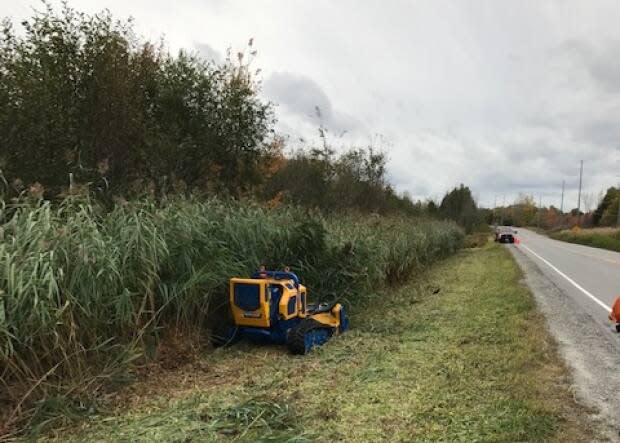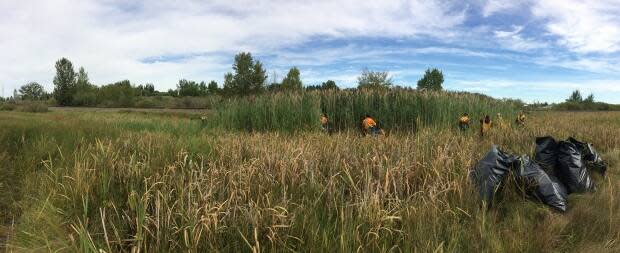'Murder of the wetlands': Invasive phragmites spreading to Lanark County


It's not bad to look at, but an aggressive and invasive plant called phragmites is threatening the biodiversity of wetlands and waterways in Lanark County.
"There's no doubt it's a nice-looking reed ... but it gets away with the murder of the wetlands because of that," said Dave Overholt, a cottager and self-described "avid citizen scientist" from Almonte, Ont.
Overholt first noticed phragmites near White Lake in 2017.
"I discovered to my surprise and a bit of horror that we had this plant on our doorstep," he said.
Now, with the help of environmental groups and lake associations, he's been ramping up efforts to manage its spread.

Expensive plant to control
Invasive phragmites, also known as the European common reed, was classified as "restricted" under the Invasive Species Act in 2016, and is one of the most expensive plants in Ontario to control, according to Jolanta Kowalski, a spokesperson with Ontario's Ministry of Natural Resources and Forestry.
It's estimated that in 2019 alone, the "prevention, control and management" of phragmites in Ontario cost municipalities about $3 million. That doesn't include money spent by individual landowners, conservation authorities and other resource agencies.
That makes phragmites the fifth-costliest invasive species in Ontario, just ahead of wild parsnip. Zebra mussels were the most expensive, costing a whopping $30 million to manage.

"Phragmites is an aggressive invader, and is very difficult to eradicate once it becomes established," Kowalski said in an email to CBC.
The tall weeds, with rough stalks and tassel-like tops, crowd out native vegetation and restrict the movement of animals, amphibians and reptiles. Their dense stands can grow as many as 200 stems per square metre and reach heights of up to five metres. They can also impede drainage, block waterfront access and even pose a fire hazard.
'Phragmites sighters and fighters'
Southern Ontario has been hit particularly hard by the invasive species, but in Lanark County the spread is still manageable, according to Michelle Vala, environmental coordinator at Lanark County Public Works.
Vala and Overholt both spoke at a webinar on Thursday for residents looking to learn more about how to spot and report the invaders. The webinar was hosted by the Otty Lake Association in partnership with Friends of the Tay Watershed.
"We're hoping that we can get more people to report the plant. We need to get a sense of how far this infestation goes into the County," Vala said.

"It has in other parts of Ontario taken over some waterfronts and watershed areas, and so we need to be what I call phragmites sighters and fighters," Linda Cuthbertson said, director of the Otty Lake Association.
One of the challenges with identifying invasive phragmites is the existence of a native subspecies, but the invasive plant is generally much taller and tan in colour with blue-green leaves and large, dense seed heads.
Residents are being asked to report any sightings using the EDDMapSOntario app.

 Yahoo Finance
Yahoo Finance